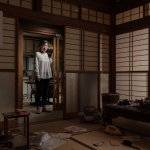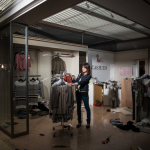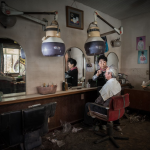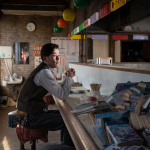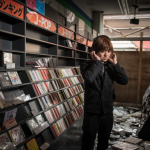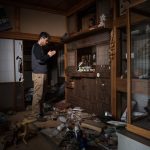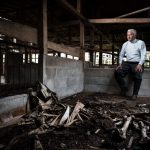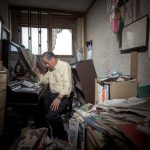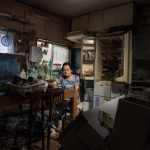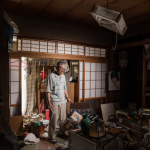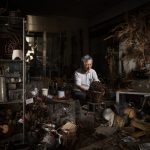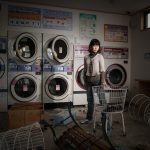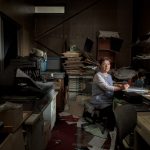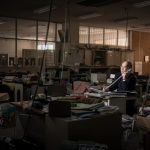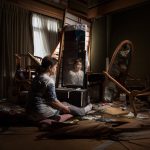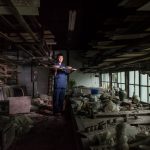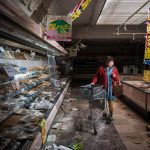Haunting photos of Fukushima
 Haunting photos show the residents who dared to go back to a ghost town created by nuclear disaster Fukushima
Haunting photos show the residents who dared to go back to a ghost town created by nuclear disaster Fukushima
By Sarah Jacobs
In March 2011, the biggest nuclear disaster since Chernobyl occurred in the Tōhoku region of Japan. The Fukushima Daiichi nuclear disaster was caused by an earthquake and then a resulting tsunami. The devastating string of evens caused thousands of deaths. Three major hydrogen explosions occurred on site over the course of three days.
While the nuclear disaster itself killed no one, according to the World Health Organization, officials imposed a restricted zone around the site. Over 100,000 people were forced to evacuate their homes in the Fukushima Daiichi area.
Photographers Carlos Ayesta and Guillaume Bression were on the ground in the days after the disaster, documenting the horrific events, but their more recent, five-year long project is a breathtaking series of staged photographs of locals returning to the “no-go” zone.
Their series, called “Retracing Our Steps,” brought locals back to their abandoned homes and local businesses, acting as normal as possible given the tragic circumstances. Below, see their striking work.
Retraceoursteps Ayesta Bression 18
A woman poses inside a laundromat destroyed by the Fukushima Daiichi nuclear disaster.Carlos Ayesta & Guillaume Bression
For this series, Bression and Ayesta wanted to answer the question: “What do the former residents think about going back to their ghost towns?”
Carlos Ayesta & Guillaume Bression
“From the beginning we wanted to do something in between documentary and staged photography,” Bression told Business Insider.
Carlos Ayesta & Guillaume Bression
Having been on the ground during the time of the events, they understood the delicate nature of this particular work.
Carlos Ayesta & Guillaume Bression
“Trying to do an artistic project on such a sensitive crisis was really difficult but we wanted to show the area surrounding the plant in an other way than what we did when we where covering the crisis for news coverage,” Bression said.
Carlos Ayesta & Guillaume Bression
“We shot all the pictures of this project in the evacuated area surrounding the Fukushima plant — in the cities of Futaba, Okuma, Namie, Iitate, Tomioka, Naraha, Odaka, Kawauchi, and Katsurao,” he said.
Carlos Ayesta & Guillaume Bression
Subjects were asked to act as normal as possible within the space.
Carlos Ayesta & Guillaume Bression
“The idea behind these photographs was to combine the banal and the unusual,” Bression said.
Carlos Ayesta & Guillaume Bression
While beginning the project, Ayesta and Bression realized that photographing with artificial lights highlighted the desolation.
Carlos Ayesta & Guillaume Bression
Preparation for this series took time.
Carlos Ayesta & Guillaume Bression
”
“We went together on the fields in the no-go zone surrounding the Fukushima plant maybe 3 months [in advance before shoots]. Each time the preparation was really long. In order to find the right place, and convince the inhabitant to go back there with us was quite difficult,” Bression said.
Carlos Ayesta & Guillaume Bression
For this series, the two wanted to show what the “inhabitant has to face when they are coming to the place were they used to live,” Bression said.
Carlos Ayesta & Guillaume Bression
“For different reasons, the Japanese government is putting a lot of effort to convince people to go back there. But most of the area has been closed for almost five years now and as long as the time goes by, it is more and more difficult for them to come back,” he said.
Carlos Ayesta & Guillaume Bression
“That’s why we asked former residents or inhabitants from the Fukushima region, and in some cases, the actual owners of certain properties, to join us inside the no-go zone and open the doors to these ordinary, but now unfriendly, places,” he said.
Carlos Ayesta & Guillaume Bression
In terms of the radiation exposure, Ayesta and Bression were not worried.
Carlos Ayesta & Guillaume Bression
”
“If you live there, it can be a problem — but for photographers going there for only a few weeks, the accumulated dose of radioactivity is not an issue,” Bression said.
Carlos Ayesta & Guillaume Bression
The two strive to stay neutral on the radiation debate. “We don’t want to say if we are pro or anti-nuke. We just want to illustrate the consequence of this kind of accident, and what you can see when you are going there is that for those families it is huge,” Bression said.
Carlos Ayesta & Guillaume Bression
Their work also aims to remind viewers not just of the nuclear disaster, but the tsunami and earthquake that also ripped apart the area.
Carlos Ayesta & Guillaume Bression
Bression reflects on the emotions his subjects might be feeling: “What happened to the area is really sad. It is really difficult to imagine what you can feel when you are forced to evacuate from your home without knowing when you will be able to come back.”
Carlos Ayesta & Guillaume Bression

